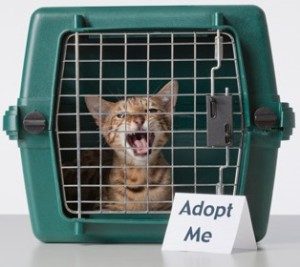 Bringing home a new cat as an addition to your family is an exciting experience. Before picking out the cutest kitten from shelters, homes, streets or country barns, you must thoroughly prepare your home as a safe environment for your cat.
Bringing home a new cat as an addition to your family is an exciting experience. Before picking out the cutest kitten from shelters, homes, streets or country barns, you must thoroughly prepare your home as a safe environment for your cat.
Here are some tips that will help you in making sure that your new beloved pet will feel comfortable in their new home.
Cats are very territorial. In a new home where they have not established their territory yet, they can feel uneasy. There is a tendency for cats to hide under a bed or inside a closet for a few days or even for a few weeks. Provide a small space for the cat that he/she can call his own. The bathroom or laundry room are ideal locations. Furnish the room with your cat’s basic needs like food, water and cat litter. You can buy a covered cat bed from pet stores or even make one. Get a cardboard box turn them upside down then create two “doors” cut in it. Cats prefer to have an alternative escape route.
Fill a litter box with one or two inches of litter. You can create your own cat litter or buy one from a pet store. Make sure that your cat will not be disturbed while he/she is doing his/her own business. Place the litter box away from where the food and water are placed.
You need to wear down your cat’s claws. This will save your furniture and other valuable items from scratches. Since is it natural for cats to scratch, provide a scratching pole. Some put toys at the top of the scratching pole to entice the cats to reach for them.
Look at your place with a cat’s perspective. If you think your valuables are interesting for a cat and they are placed on tops of counters, you need to remove them. You can put back your mementos and baubles to their original place once the cat has happily settled in your home.
Cover holes in the house to avoid kittens from slithering inside them. You might have a hard time in pulling them out.
Also buy a cat tree if possible. Being territorial that they are, they love to be perched on top to see the expanse of their territory. If it is not possible for you to buy a cat tree, create some raised surfaces in your home especially if you don’t have one.
Don’t force the cat to come to you. Let him/her approach you in his/her own time. Once the cat is already accustomed to your presence, he/she will be the first one to approach you.
Don’t force your cat to eat if he/she doesn’t do so at first. Just make sure that you provide food and water. Come back from time to time to make sure she’s drinking. If the cat hasn’t eaten for a few days, go consult a veterinarian.
Take your cat to a veterinarian for a wellness visit. If the cat has previous records of immunizations, take them with you.
Provide toys for the cat. Once the cat is familiar with his/her new territory, by then he/she is ready to play. You can buy toys from pet shops or make them on your own. Many cats like feather wands and even a tissue paper to bat around.
Cats are great pets. But you have to be prepared to make sure that your experience with your new pet will be a very pleasant one.
Effects of Toxoplasmosis on Humans
Toxoplasmosis is a disease caused by the infection of the most common parasite called Toxoplasma gondii. Toxoplasma gondii is a protozoa, a single-celled organism. The most common symptom observed is similar to flu. But healthy people infected may not develop any signs or symptoms. It is still wise to consult a physician if other symptoms are present. But to those who have weak immune system, toxoplasmosis can cause severe and even dangerous complications.
Aside from flu-like symptoms, there are some individuals with healthy immune system may experience other symptoms. The symptoms may include:
- Body aches
- Swollen lymph nodes
- Headache
- Fever
- Fatigue
- An occasional sore throat
Cats are the intermediate hosts of toxoplasma. The parasite can be transferred from cats to humans but there are many and even complicated factors involved before actual contamination can occur. Cats can be infected with toxoplasma if they eat raw meat, mice or birds that are carrying any one of three infective stages of the organism. Those three stages are: oocyst (eggs are shed in the feces), cyst (can be found in the tissue, typically in the muscle) and tachyzoite (once the bacteria has established infection in the cat’s intestines, it will disseminate throughout the body as it rapidly divides).
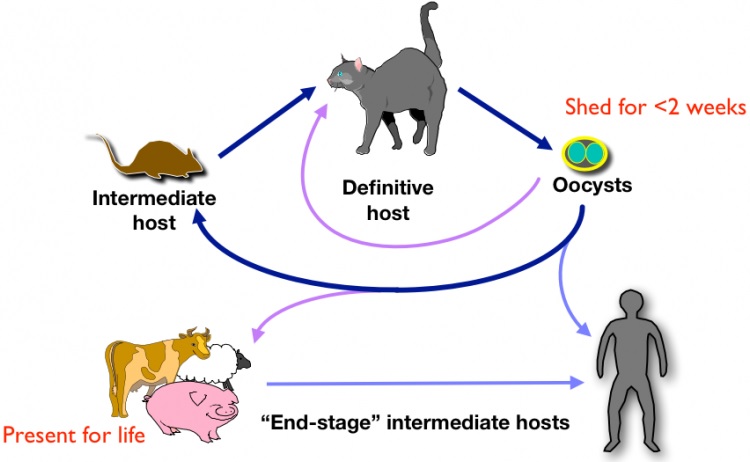
Healthy cats that are infected do not show any symptoms. But cats with other diseases like Feline Leukemia can become very sick and can experience any of the following symptoms from lethargy, depression, anorexia, fever, diarrhea, pneumonia, hepatitis, uveitis (inflammation of the eye) to central nervous system disease.
Toxoplasma can infect humans through any of the following processes:
- Contact with cat feces that contain the parasite. This could happen if you accidentally touch your mouth without washing your hands after cleaning a litter box or gardening.
- Ingest contaminated food or drink. Aside from cats, lamb, pork and venison can also be infected with the parasite.
- Use contaminated kitchen utensils. The parasite can be transferred from the contaminated meat to knives thus passing the infection to humans. Make sure that utensils are thoroughly washed prior to food preparation and cooking.
- Eat vegetables and fruits that are unwashed. Fruit surfaces may contain parasite traces. Parasite is transferred when an individual eats raw fruits and vegetables.
- Receive an infected organ or blood either through transplant or transfusion. This is a very rare occurrence since thorough tests are done
- prior to performing the medical procedures.
Toxoplasmosis is treatable. It is cured with medications like pyrimethamine, sulfadiazine, and clindamycin.
As discussed above, healthy individuals may not show any symptoms of toxoplasmosis, though sometimes eye infections develop. A healthy immune systemkeeps the parasite in check. They may remain in your body but they stay at an inactive state. This can even provide an individual with a life-long immunity against the parasite.
People who are suffering from HIV/AIDS, those who are undergoing chemotherapy, and those who are taking steroids or other immunosuppressant drugs are at risks of serious health problems and even severe complications. The following symptoms may appear:
- Headache
- Confusion
- Poor coordination
- Seizures
- Lung problems that resembles tuberculosis or Pneumocystis jiroveci pneumonia (a common infection that occurs in people who are suffering from AIDS)
- Blurred vision caused by retina inflammation
Though Toxoplasmosis is not a health issue with pregnant women, they should still take extra precautions to avoid infection. If a pregnant woman is infected just before or during pregnancy, there is a 30% chance of passing the infection to the baby.
Toxoplasmosis is curable. Yet, it is still better to take extra pre-cautionary measures especially if you have cats. Take note of the following steps listed to minimize or avoid infection:
- Meat should be cooked thoroughly for 15 to 30 minutes.
- Make sure that cats are kept indoors.
- Feed cats with commercially prepared foods. Cats who hunt are more susceptible to infection.
- Wear rubber gloves during gardening then thoroughly wash hands after doing so.
- Empty litter boxes daily. Also wear rubber gloves while disposing cat feces.
- Wash hands thoroughly during food preparation.
- Drink pasteurized daily products.
- Wash hands after contact with cats.
Although everyone is at risk of Toxoplasmosis since the parasite causing it is
found throughout the world, proper hygiene is one’s best defense against this
infection. If one is a cat owner, the cat’s proper hygiene and healthy diet can also
help the animal avoid the infection thus preventing it to be passed to humans.
Five Awesome Cat Breeds
If you are looking for order in your otherwise scattered and meaningless existence, get a cat. Seriously true!
I have heard a lot of people say that if you want Zen or as defined in the dictionary, “that total state of focus that incorporates a total togetherness of body and mind”, you need to surround yourself with positivity. Erase all the negative thoughts off your mind and put all the negative energy aside. Find your center. Meditate.
Feeling much better, so far? But then, you ask, what has cats got to do with these yin yang and other Buddhism beliefs just mentioned?
Well, cats are generally described as very calm and quiet creatures. They are known to be independent-natured and mellow. I once read a book by Paulo Coelho talking about a certain group of monks in Burma who believed for a long time that having a feline friend in the same room while you meditate enhances concentration and drives off negative forces. Why and how? I have no idea, exactly. But hey, if it could be true, it might be worth a shot, at least?
So, if you are interested to subscribe to a similar practice in your home, listed below are five of the more popular cat breeds from all over the world. The list describes the general image and attitude of each breed of felines toward life and getting along with people. This piece should help you figure out which type of cat companion is your best bet towards tranquility.
 1. Breed: Abyssinian
1. Breed: Abyssinian
Origin: Egypt
Abyssinians or Abys, as they are more popularly called, are playful feline creatures who love to explore and hunt. They need constant interaction and attention lest they get bored and sad. They are sensible and intelligent extroverts who get along really well with both people and cats, alike.
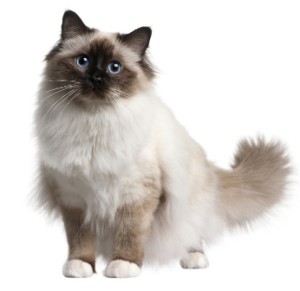 2. Breed: Birman
2. Breed: Birman
Origin: Burma
Known as the “Sacred Cat of Burma”, the Birman is an easygoing and a highly adaptable domestic breed of cats. They have very distinct features and should not be confused with the Burmese breed. The Birman cat is a very laid-back and cool feline fellow.
 3. Breed: Burmese
3. Breed: Burmese
Origin: Burma
If you have kids, the Burmese cat is the ideal pet to give because this breed is famous to be very gentle and friendly to people. They are very expressive and sociable. They are also known to be intelligent cats.
 4. Breed: Maine Coon
4. Breed: Maine Coon
Origin: North America
A highly trainable breed with above-average intelligence compared to other cat breeds, these biggies are mellow creatures and they interact very well with children. A little vain maybe, these cats need their furs brushed everyday to avoid ugly tangles. A loud mouth with a fascination with water, they can be very playful and clownish. These big-boned felines are fun to have around the house. They are the ultimate fat cat.
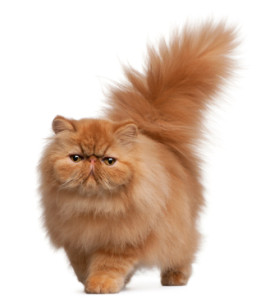 5. Breed: Persian
5. Breed: Persian
Origin: Ancient Persia
Much like the attention-loving Maine Coon, Persian cats also need their daily TLC especially when it comes to grooming. They are generally known as the quiet, shy-type but they are also very affectionate to their owners and sociable enough to strangers.
Top 10 Movie Cats
Cats are among the most well-loved characters in the movies. Over the years, we have seen a lot of the most adorable and most cunning cats featured in cinemas where we all became fans. Here are the top 10 movie cats that created a mark in our hearts and in our lives.
 1 Garfield
1 Garfield
Who doesn’t know Garfield? He is a lazy, narcissistic, and overly demanding cat owned by Jon Arbuckle. But Garfield is a fictional cat who was created by Jim Davis as a character in a comic strip. Garfield is a Guinness World Record holder of the most widely syndicated comic strip in the world. He appears in more than 2,500 newspapers and other journals which make him extremely popular. As of this day, there were already two movies made about Garfield, one in 2004 (Garfield the Movie) and the sequel in 2006 (Garfield: A Tale of Two Kitties). The first movie was centered on how Odie came to the household of Garfield and how they eventually became friends. The second movie centered on Garfield’s travel to another country and how he met his doppelganger, but in the case of cats, they just really have the same breed and look alike.
 2 Milo (The Adventures of Milo and Otis)
2 Milo (The Adventures of Milo and Otis)
Milo is a very curious male tabby cat from the film The Adventures of Milo and Otis. The movie was originally made by Masanori Hata and Kon Ichikawa in 1986. An English version was made and released in 1989 featuring the voice of Dudley Moore.
The film was widely received and became a favorite in Japan and Worldwide because of the many adventures and inquisitive travels of this adorable cat. The story features Milo on an adventure while Otis follows him wherever he goes but never see each other since Otis is following Milo’s trail.
Before the movie ends, they finally met and reunited with each other as Otis catches up to Milo.
 3 Monty (Stuart Little)
3 Monty (Stuart Little)
A very funny alley cat named Monty who appears in Stuart Little movies is a refreshing character in a family drama. He has a penchant for telling everything he knows and that’s what makes him so adorable and unforgettable in the movies.
He was fondly called among the other characters in the movies as “The Mouth” because of the information and the network of data sources he has. Monty appearedin the two movies “Stuart Little” and “Stuart Little 2”.
 4 The Cheshire Cat (Alice in Wonderland)
4 The Cheshire Cat (Alice in Wonderland)
The Cheshire Cat is a character in the book Alice’s Adventures in Wonderland written by Lewis Carroll. There were various movie versions including live action and animated formats about Alice in Wonderland and the Cheshire Cat is a key character that always appear in the films.
Its most famous feature is its wide grin showing all white teeth. This is how the saying “grinning like a Cheshire cat” was derived.
The animated Disney movies of Alice in Wonderland are among the most popular appearances of the Cheshire Cat.
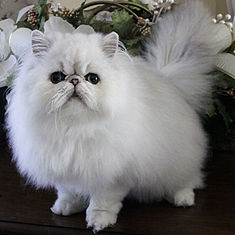 5 Mr. Tinkles (Cats and Dogs)
5 Mr. Tinkles (Cats and Dogs)
Most people probably think that cats are out to rule the world and dominate all other creatures and Mr. Tinkles is the very icon of that perception. Mr. Tinkles is a very round persian cat who appeared as the main villain in the first Cats and Dogs movie and in the sequel Cats and Dogs: The Revenge of Kitty Galore.
Despite his evil plot to rule the world, his round plump shape and his cute whiskers are just so adorable that a lot of movie fans find amusing.
 6 Calico (Cats and Dogs)
6 Calico (Cats and Dogs)
Calico is a fat cat who believed that he is Mr. Tinkles friend in the Cats and Dogs Movies. However, he often gets abused by Mr. Tinkles and is often used for his evil plot to rule the world. Nonetheless, Calico is a very adorable sidekick who is the opposite of Mr. Tinkles. Even though he is extremely afraid of dogs, he has a more positive outlook about life and the world in general which makes him unforgettable in the movies. He appeared in the first movie of “Cats and Dogs” and in the sequel “Cats and Dogs: The Revenge of Kitty Galore”.
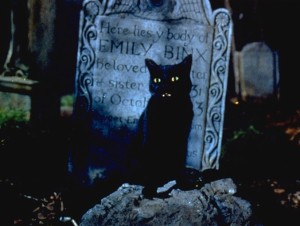 7 Binx (Hocus Pocus)
7 Binx (Hocus Pocus)
Hocus Pocus is a Disney movie in 1993 about three witches and featuring a mysterious black cat named Binx. It was later on revealed in the movie that Binx was actually a young man who was cursed and turned into a cat. Binx is one of the central characters in the movie who helped the protagonists as the story unfolds.
Binx is an immortal which is what makes him a very interesting character in the movie. His appearance as a black cat is iconic in many other movies for mystery and enigma.
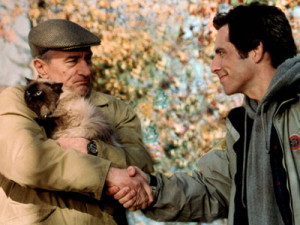 8 Mr. Jinx (Meet the Parents)
8 Mr. Jinx (Meet the Parents)
Mr. Jinx is a cat featured in the movie Meet the Parents. He is owned by Jack Byrne, the character played by Robert De Niro, who is the father of Pam Byrne, the female lead character in the movie played by Teri Polo. Mr. Jinx actually takes the spotlight when he accidentally broke the urn that encased the ashes of Jack’s dead mother.
This became the plot where Greg Focker, the lead male character in the movie talks about hilarious things about Mr. Jinx and milking male cats while trying to cover up the cat’s mischief from Jack.
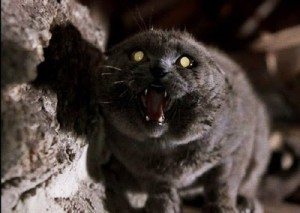 9 Church (Pet Sematary)
9 Church (Pet Sematary)
Who wouldn’t forget about Church, the cat who died after being run over by a big truck, and came back to life again and again. The mystery unfolds in the movie Pet Sematary, an adaptation of one of Stephen King’s bestselling horror novels. Church became the door to the many other stories revealed in the movie about how other people and animals were resurrected in the mysterious burial ground. Church became an icon of all scary cats that carry in them a horrifying mystery and secret which suggests to be better off left undiscovered and untold.
 10 Oliver (Oliver and Company)
10 Oliver (Oliver and Company)
Oliver is best remembered in the musical animated movie Oliver and Company. He is a homeless kitten who lives on the street with a gang of dogs. Oliver is actually an adaptation of Charles Dickens’ Oliver Twist and thus, the familiar setting of New York City. Oliver is a very cute and adorable kitten who is seeking a home and a family much like the plot in Dickens’ story. But his many misadventures revolve around his life on the streets on a daily basis and his struggle to fit in among the dogs who rule the streets. As is the case of many Disney movies, Oliver and Company has a family-oriented theme and is generally popular among little children. People who are not much into the musical genre will find Oliver as another singing Disney character but children will keep on playing the movie again an
Today, I was talking to my five-year-old son and I asked him what gift he wants from Santa Claus this coming Christmas. I was ninety nine percent sure that he was going to answer Transformers Autobot Optimus Prime: Leader Class but he didn’t. Instead, without any hesitation whatsoever, he told me all about his grand plan to write a long letter to Santa Claus this year so he could ask the big white-bearded guy for a…PET!
SAY WHAT, BABY BOY?!?
Yes, his shocking reply definitely triggered a panic alarm. I almost fell off my chair. I must admit that as a kid, I was never really a big fan of pets. I never felt the need to get a canine or a feline friend of my own growing up. I knew then as I know now that a pet is a big responsibility. A pet owner should be mature enough in order to take care of another living creature.
So you can probably imagine my surprise when I heard my son’s Christmas wish for this year? I was really torn whether or not his dad and I should grant his request or not. And if yes, what kind of a pet? If we choose that particular pet, what breed is best? If we get that specific breed, what color? And the list goes on and on.
Finally, I figured if “Santa” indeed decides to get this nice boy a pet for the holidays, then his decision should be an informed and well-researched one. So, just to be fair to the kid, I started to Google a bunch of items to check if our household would be able to handle the pressure and logistics of adding another member to the family — a member who, I’m scared to admit, could never be potty trained, at that.
I started surfing the internet looking for relevant and important considerations in choosing a pet for a toddler or a family. Felines come highly recommended even more so than the canines or aquatic pet animals. A more in-depth search online revealed that cats are definitely the more interesting choice.
All the interesting facts I found out about these feline companions were so cool, charming and amusing, I just had to share some.
Do you know that?
- Most cats are lactose intolerant. They get diarrhea if you feed them milk or other milk products.
- It’s true, cats love naps. They spend 2/3 of everyday sleeping.
- Cats are “obligate carnivores”, meaning they have to eat meat or they will not survive.
- Cats are emotionally transparent. You can determine how a cat is feeling by looking at the ears. If the ears are rotated backwards, the cat may be angry. If the ears are upright and slightly forward, it means the cat is excited.
- Cats use their tails for multiple purposes: for balance, for protection and for self expression.
- Cats have very powerful sense of smell because they have two organs scent detection. First they have the regular nose and second, they have what is known as “Jacobson’s organ”.
- Cats have the largest eyes of any mammal. Think Puss in Boots in Shrek the movie.
- Cats don’t have a sweet tooth. They cannot taste sugary food and chocolates can kill them.
- Each and every cat has a different and unique nose pad pattern. Much like finger prints in human beings.
- They are very picky eaters. Cats prefer their food at room temperature, not too cold and not too warm. Classy, ei?
Cat Facts – Part 1
Pets provide their owners physical and emotional benefits. Pets can give companionship to elderly adults who do not have adequate social interaction with other people.
Here, I am going to present some coolest facts about cats which will help you to know your own cat better.
- Cats have excellent night vision and can see at only sixth the light level required for human vision. This is partly the result of cat eye having a tapetum lucidum, which reflects ant light that passes through the retina back into the eye, thereby increasing the eye’s sensitivity to dim light. All kittens are born with blue color eye. The eyes will change from blue to their permanent color by 12 weeks of age.
- Cats have excellent hearing and can detect an extremely bored range of frequencies. They can hear higher-pitched sounds than either dogs or humans, detecting frequency from 55Hz up to 79kHz.Cats have 32 muscles in each ear, while humans only have six.
- Cats responds strongly to plants that contains nepetalactone, especially catnip, as they can detect that substance at less than one part pen billion. This response is also product by other plants, such as silver vine and the herb valerian; it may be caused by the smell of these plants mimicking a pheromone and stimulation cat’s social or sexual behaviors.
- The average life for male indoor cats at birth is around 12 to 14 years, with females usually living a year or two longer, while the average for an outdoor cat is only 3 to 5 years.
- Female cats are seasonally polyestrous, which means they may have many periods of heat over the course of a year, the season beginning in spring and ending in late autumn. Her periods occur about every two weekends last about 4 to 7 days. Multiple males will be attracted to a female in heat. The males will fight over her, and victor winds the right to mate. At the first female will reject the male, but eventually all female will allow male to mate. The female will utter a loud yowl as the male pulls out of her. This is because a male cat’s penis has a band of about 120-150 backwards-pointing penile spines, which are about one millimeter long, upon withdrawal of the penis, the spinners rake the walls of the female’ vagina, which is a trigger for ovulation. This act also occurs to clean the vagina of other sperm in the context of a second mating, thus giving the later males a larger chance of conception.
- Cats have relatively few taste buds compare to humans. Unlike humans and dogs, cats do not have a ‘sweet tooth’. Cats only have 473 taste buds, while people have 9,000.Cat’s taste buds instead respond to amino acids, bitter tastes and acids.
- Cat’s whiskers are highly sensitive to touch. To aid with navigation and sensation, cats have dozens of movable vibrissae (whiskers) over their body, especially their face. These provide information on the width of gaps and on the location of objects in the dark, both by touching objects directly and by seeing air currents; they also trigger protective blinks reflexes to protect the eyes from damage.
- Cat uses the tail much like human uses the arms for balance when walking on a narrow surface. When it is cold a cat might wrap the tail around the body and over the nose. A cat will show what kind if mood it id in with the tail; raised id content, tip quivering if excited, twitching if irritated or low and puffed up if scared.
- Cats conserve heat by reducing the flow of blood o their skin and lose heat by evaporation through their mouth. They do not sweat, and pant for heat relief only at vey high temperatures. A cat’s body temperature does not vary throughout the day; this is part of cat’s general lack of circadian rhythms and may reflect their tendency to be active bot during the day and night. Their kidneys are so efficient that cats can survive on a diet consisting only on meat, with no additional water and even rehydrate by drinking seawater. Cats can only sweat through their paws, unlike people who have sweat glands all throughout their bodies.
- Cats are well knows for their cleanliness, spending many hours licking their coats. The cat’s tongue has backwards-facing spines about 5000 micrometers long, which are called papillae. These are quit rigid, as they contain keratin. These spines allow cats to groom themselves by licking their fur, with the rows of papillae acting like a hairbrush. Some cats, particularly longhaired cats, occasionally regurgitate hairballs of fur that have collected in their stomachs from grooming.
- The cat is a very vocal animal. Known for its trademark purring, it also produces a wide variety of other sounds. The cat has no unique anatomical feature that is clearly responsible for the sound. It was, until resent times, believed that only the cats of the Felis genus could purr. However, fields of the Panthera genus also produces sounds to purring, but only when exhaling.
- Cats can be poisoned by many chemicals that are usually considered safe by their human guardians. This is because their livers are less effective ay some forms of setoxification than those of many animals, including human and dogs. Some of the most common causes of poisoning in cats ate antifreeze and rodent baits. Many human medicines should never be given to cats. For example, the painkiller paracetamol is extremely toxic to cats; even very small doses needs immediate treatment and can be fatal. Even aspirin, which is sometimes used to treat arthritis in cats, is much more toxic them than humans and must be administered cautiously. Also, chocolate and Tylenol are both poisonous to cat.
Zen Pets: 5 Calmest Cat Breeds in the World
Birman
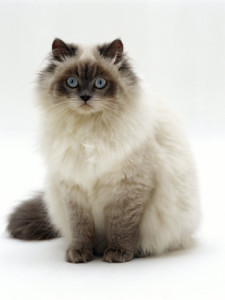 The Birman, also called the ‘Sacred cat of Burma’, is a domestic cat breed. The birman has medium-long hair, a pole-colored body with darker points and deep blue eyes. Even though the cat is pointed, the paws have white gloves. Birmans have semi-long, silky hair, a semi-cobby body and relatively small eyes compared to other cat breads and a Roman nose. In order to comply with breed standards, the Burman’s body should be an eggshell color or golden, depending on the intensity of marking colors. The markings can be pure seal, chocolate, blue, red, lilac or cream. The birman’s coat unsual sues to the white ‘gloves’ on each paw. All Birmans are born white and they start developing their color at the age of 1 week if they have a dark color and at the age of 14 days, or more, if they have a clear color. The first part which develops the color are the points of ears, nose and tail. The real color is complete at two years old and after a wintry season.
The Birman, also called the ‘Sacred cat of Burma’, is a domestic cat breed. The birman has medium-long hair, a pole-colored body with darker points and deep blue eyes. Even though the cat is pointed, the paws have white gloves. Birmans have semi-long, silky hair, a semi-cobby body and relatively small eyes compared to other cat breads and a Roman nose. In order to comply with breed standards, the Burman’s body should be an eggshell color or golden, depending on the intensity of marking colors. The markings can be pure seal, chocolate, blue, red, lilac or cream. The birman’s coat unsual sues to the white ‘gloves’ on each paw. All Birmans are born white and they start developing their color at the age of 1 week if they have a dark color and at the age of 14 days, or more, if they have a clear color. The first part which develops the color are the points of ears, nose and tail. The real color is complete at two years old and after a wintry season.
The birman is an average size of cat. Male Birman generally ranging from 8 to 12 pounds while females a little smaller.
The Birman has a wonderful balanced temperament. They are very intelligent and bond
to their people very strongly. Birmans also are curios, they like to find out what you are
doing or about anything that is new. The birman is a person-cat; they love to be around
their people.
The Birman personality is docile, quit with a strong people orientation. Although longhaired, they do not need daily grooming.
British Shorthair
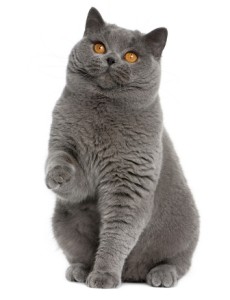 The British Shorthair is a domestic cat whose features make it a popular breed in cat shows. British shorthairs have dense, plush coats that are often described as crisp or cracking, referring to the way the coat breaks over the contours of the cat’s body. Their eyes are large, round and wildly set and cab be variety of colors, through the copper or gold eyes of the British blue are the best known.
The British Shorthair is a domestic cat whose features make it a popular breed in cat shows. British shorthairs have dense, plush coats that are often described as crisp or cracking, referring to the way the coat breaks over the contours of the cat’s body. Their eyes are large, round and wildly set and cab be variety of colors, through the copper or gold eyes of the British blue are the best known.
The British Shorthair are the muscular cat, with a “square” body shape and thick legs. British Shorthair has long, broad head. Their eyes stand out and tend to be large and round. Their relatively small ears with rounded tips are set far apart. They have pert snub noses and slightly rounded chins.
The males of this breed are larger then the females, and the size difference between
them is easily noticed to other breeds. The male’s average weight is 5-10kilograms
whereas a female weights up to 5-7 kilograms.British Shorthairs are wonderful cats for people who work, as they are very happy to simply laze around the house while their owner is out. They do not get destructive or need other animal for company. They are not very vocal breed but will meow to communicate with their owners. The breed has become favorite of animal trainers because of its nature and intelligence, and in recent years these cats have appeared in Hollywood films and television commercials.
Exotic Shorthair
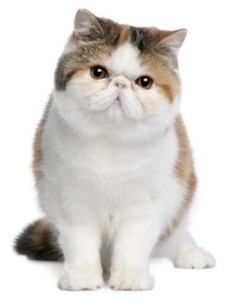 The Exotic Shorthair is a breed of cat developed to be a shorthaired version of Persian. The Exotic Shorthair is similar to the Persain in many ways, including temperament and conformation, with the exception of the short dense coat. The Exotic personality is, if not identical, very much like the Persian’s quiet, loyal, sweet and affectionate. They want to be involved i their favorite human’s lives and will quietly follow them from room to room just to see what they are doing. They also enjoy hugs and cuddles.
The Exotic Shorthair is a breed of cat developed to be a shorthaired version of Persian. The Exotic Shorthair is similar to the Persain in many ways, including temperament and conformation, with the exception of the short dense coat. The Exotic personality is, if not identical, very much like the Persian’s quiet, loyal, sweet and affectionate. They want to be involved i their favorite human’s lives and will quietly follow them from room to room just to see what they are doing. They also enjoy hugs and cuddles.
The Exotic Shorthair may grow up to 15 pounds, but in height it remains fairly short and close to ground. The appearance is cobby with short, stout legs holding up a round, muscular physique. It is compact, not fat, with the weight being attribute to the density of the bones. The shorter nostrils makes the Exotic Shorthair more sensitive to heat. High temperature may lead to breathing problems. Add that to heavier coat, and have a breed that will look for ways to stay cool.
Exotic Shorthairs have a gentle and clam personality reminiscent of the Persian, but
are livelier than their long-haired ancestors. Curious and playful, they are friendly to
other cats and dogs. They don’t like to be alone, and need the presence of their
owner .They tend more affection and loyalty than most breeds make excellent lap
cats.
Japanese Bobtail
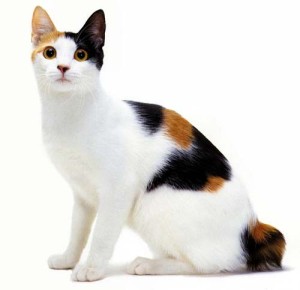 The Japanese Bobtail is a breed of domestic cat with an unusual “bobbed” tail more closely resembling the tail that of other cats. The variety is native to the Japan and Southeast Asia, though it is now the world. The breed has been known in Japan for centuries, and it frequently appears in traditional folklore and art.
The Japanese Bobtail is a breed of domestic cat with an unusual “bobbed” tail more closely resembling the tail that of other cats. The variety is native to the Japan and Southeast Asia, though it is now the world. The breed has been known in Japan for centuries, and it frequently appears in traditional folklore and art.
The Japanese Bobtail is medium-sized and slim, though well-muscled. As its name suggests, the most striking feature of the breed is its short tail, which is about four inches long. Meanwhile, its beautiful, soft and silky coat can be found in a variety of colors and patternsA born Japanese Bobtail id bold, curious, alert and easily smitten with strangers.
Always attentive and long loving, the Bobtail makes for a wonderful companion. In fact, if it sees a sudtraught person, the Bobtail will offer a paw for comfort.
In addition, the Bobtail is extremely active and playful, especially when it comes to jumping and prancing about. It enjoys human companionship and can never “converse” in chirping voices and a variety of tones, which has been called “singing” by some breeders.
Ragdoll
 The Ragdoll is a cat breed with blue eyes and a distinct colorpoint coat. It is a large and muscular semi-longhair cat with a soft and silky coat. It is best known by its docile and placid temperament and affectionate nature. The name “Ragdoll” is derived from the tendency of individuals from the original breeding stock to go limp and relaxed when picked up.
The Ragdoll is a cat breed with blue eyes and a distinct colorpoint coat. It is a large and muscular semi-longhair cat with a soft and silky coat. It is best known by its docile and placid temperament and affectionate nature. The name “Ragdoll” is derived from the tendency of individuals from the original breeding stock to go limp and relaxed when picked up.
The Ragdoll is one of the largest domesticated cat breeds with a sturdy body, large frame and proportionate legs. Fully-grown female weights from 8-15 pounds. Males are substantially larger, ranging from 12-20 pounds or more. Ragdoll comes in six different colores: red, seal, chocolate, flame and the corresponding “dilutes”, including blue lilac and cream. Ragdoll kitties are born white; they have good color at 8-10 weeks and full color and coat at 3-4 years.
Ragdolls have nice manners and are easy to live with. Ragdolls prefers to stay on
the same level with its people rather than highest point in a room.
Brief History of Household Cats: How Did Cats Become Domesticated?
It is said “Many people prefer cats to other people and many cats prefer people to other cats”. This clearly reveals the euphonious relationship between human and cats which is dated back to as early as 3000BC in ancient Egypt.
It is inferred from the archeological studies of the region that African wild cat (Felvis sylvestris lybica) is the primary ancestor of the domestic cat. Hence, they are seen with traditional people living as domestic cats. Genetic studies being done using DNA mapping techniques suggest that there is no such genetic difference between African wild cats and pet cats. Whereas, the European wild cats which are thought to have added up to the development of pet cats are certainly distinct from both.
It took scientists some time to gather the knowledge of how, when and where the cats became first tamed.
Some indications first arrived from the Cyprus Island in 1983, where archeologists found a cat’s jawbone
Backdated 8000 years. It almost seems absurd that human would have brought wild cat to the island as Desmond Morris in Catworld wrote “spitting, scratching, panic-stricken wild feline would have been the last kind of boat companion they would have wanted,” so the studies suggest that domestication occurred 8000 years ago from now.
According to Experts and historiographers, the African Wild cats attracted by the mice and rats, first reached Egyptian grain stores which were located along the banks of the Nile.Cats bind themselves to the people by
Eliminating rodents. The cats got captivated by the affluence of rats and humans were happy for they found a way to control pests. Cats then would have benefited from a lesser population of predators and could breed with much better chance of success by being in the territory of man .They produce a lot of kittens in lesser time which resulted in their quick establishment alongside us, the humans. People took newly borns kitten in their homes, took care of them, feed them so they started to view them as parent type figures. Such kittens did not seem to lose these bondings even when they became sexually mature and entered their adulthood.
Because they helped a lot in protecting food stores from pests, the ancient Egyptians converted them into sacred Feline deities. They named these cats as “miw”. When “miw” died, the owner grieved and the cat was mummified and placed in wooden coffins. Cats and lionesses were associated with the much respected
Goddess of war, the Sekhmet while the tomcats were regarded as angelic to the sun god, Ra. The protection
Of cats in that era became such a sensitive issue that if anyone finds himself near an injured cat, immediately
Escaped from the scene in case they were blamed. It meant a death sentence for the offender if being
Pronounced guilty of killing a cat in Egypt.
Though Egyptians took initiatives to prevent the export of their revered felines, the Greeks stole the cats
To solve their own rodent problem.They were first seen in Europe around 900BC.Gradually Egyptians began to sell cats to other europians such as Roman, the Gaels, the celts and that explains how this species began to spread worldwide. In china, the cats were common by 500BC. At first, they were gifted to emperors by Egyptians then noble people were allowed to own them and after sometime priests and common people could own them as well. Pet cats interbred with the local wild cats and forged some of the breeds which can be seen today.
However after few decades, the fate of cats changed and they became associated with wrongdoings, witches and evils. In 1484, pope innocent VII declared the death penalty for cat-worshippers to be burned as witches for witches worship satans and they took on the form of their animal helpers in which cats were the most common.Roaming of cats at night further linked them to witches and witchcrafts. Any cat in the possession of an old woman was thought of as a witch’s evil partner. It was ordered to hunt down all cat owners, many cats and cat owners were actually burnt to death.
The reputation of cats did not get better in Europe until the 17th century when they became mousers especially on the board ships, however in Victorian times, cats were again accepted as household cats.But of course, nowadays cats are famous among the comic strips and television shows. The quality of their life is better than ever though it couldn’t entirely elude its connection with evil. Their quality of being independent has definitely made them a popular animal and hence their presence cannot be ignored.
Mucopolysaccharidosis
Feline Mucopolysaccharidosis is a congenial disease in cats that occurs due to mucopolysaccharides in lysosomes within cells in the body of the cat.
There are currently 4 different types of Mucopolysaccharidosis:
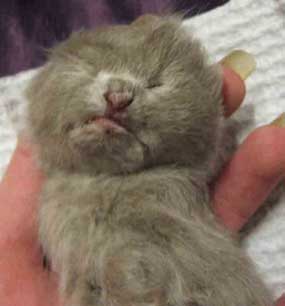
Mucopolysaccharidosis I – Caused by deficiency in an enzyme that deforms neuros in the brain and spinal columns
Mucopolysaccharidosis II – Results in abnormal facial development, as well as limited growth and function with hindlimbs
Mucopolysaccharidosis VI – Deficiency in N-acetylglucosamine-1-phosphotransferase is the perceived cause of this variant. Structural growth retardation as well as cognitive deficiencies accompany this variant of Mucopolysaccharidosis
Mucopolysaccharidosis VII – Symtoms are prominent starting 12 weeks: enlarged abdomen, granulation of neutrophils, various structural anoamlies occurs.